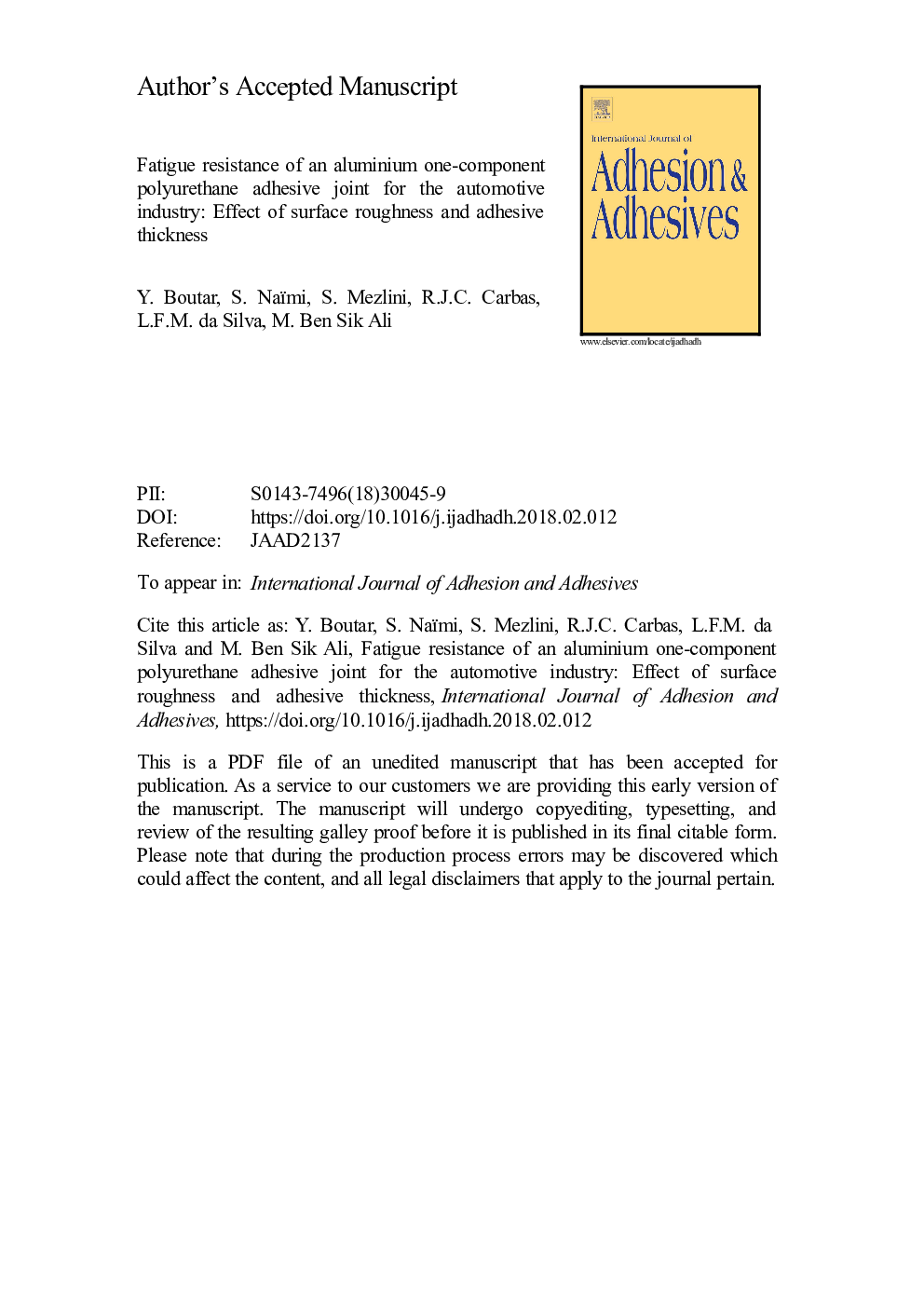| Article ID | Journal | Published Year | Pages | File Type |
|---|---|---|---|---|
| 7170951 | International Journal of Adhesion and Adhesives | 2018 | 29 Pages |
Abstract
Fatigue is a crucial type of loading for many structural components that contain adhesive bonding systems such as the automotive industry. One of the main advantages of adhesives is their weight-reduction aptitudes. Furthermore, adhesively bonded joints allow a good damping to the fatigue's solicitation with fewer sources of stress concentration. In addition, a suitable surface treatment allows a great joint interface adhesion under cyclic loading. Hence, the mechanical preparation of the bonded surface influences directly the bonded joint performance. Therefore, a careful consideration should be given to the choice of the bonded adhesive thickness. The aim of this paper is to investigate the influence of surface roughness of an aluminium alloy and the adhesive thickness of a one-component polyurethane adhesive, to be used in several parts for buses structure, on the fatigue behaviour of single lap joints. To achieve this purpose, four different surface roughnesses were prepared on aluminium specimens, with an arithmetic average height from Ra â 0.6â¯Âµm to Ra â 1.5â¯Âµm. Bonded specimens with four adhesive thicknesses from 0.3â¯mm to 2â¯mm were manufactured and tested in dynamic tests. The results confirm that there is an optimum combination of surface roughness and adhesive thickness providing the maximum fatigue life. Moreover, good agreement was found between this investigation and a previous work using the same parameters under static loading.
Related Topics
Physical Sciences and Engineering
Engineering
Mechanical Engineering
Authors
Y. Boutar, S. Naïmi, S. Mezlini, R.J.C. Carbas, L.F.M. da Silva, M. Ben Sik Ali,
